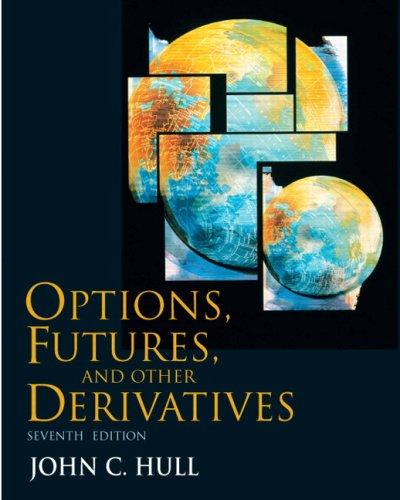Question
Managerial Accounting 1. Under variable costing, fixed manufacturing overhead is: A) carried in a liability account. B) carried in an asset account. C) ignored. D)
Managerial Accounting
1. Under variable costing, fixed manufacturing overhead is:
A) carried in a liability account.
B) carried in an asset account.
C) ignored.
D) immediately expensed as a period cost.
2. Under absorption costing, fixed manufacturing overhead costs:
A) are deferred in inventory when production exceeds sales.
B) are always treated as period costs.
C) are released from inventory when production exceeds sales.
D) none of these.
3. In an income statement prepared as an internal report using variable costing, variable selling and administrative expenses would:
A) not be used.
B) be used in the computation of the contribution margin.
C) be used in the computation of net operating income but not in the computation of the contribution margin.
D) be treated the same as fixed selling and administrative expenses.
4. When production exceeds sales, the net operating income reported under absorption costing generally will be:
A) less than net operating income reported under variable costing.
B) greater than net operating income reported under variable costing.
C) equal to net operating income reported under variable costing.
D) higher or lower because no generalization can be made.
5. Gyro Gear Company produces a single product, a special gear used in automatic transmissions. Each gear sells for $28, and the company sells 500,000 gears each year. Unit cost data are presented below:
|
|
| Variable | Fixed |
|
| Direct material.......................... | $6.00 |
|
|
| Direct labor............................... | $5.00 |
|
|
| Manufacturing overhead........... | $2.00 | $7.00 |
|
| Selling & administrative............ | $4.00 | $3.00 |
The unit product cost of gears under variable costing is:
A) $13
B) $20
C) $17
D) $27
6. A company produces a single product. Variable production costs are $12 per unit and variable selling and administrative expenses are $3 per unit. Fixed manufacturing overhead totals $36,000 and fixed selling and administration expenses total $40,000. Assuming a beginning inventory of zero, production of 4,000 units and sales of 3,600 units, the dollar value of the ending inventory under variable costing would be:
A) $4,800
B) $8,400
C) $6,000
D) $3,600
Use the following to answer questions 7-12:
Abbey Company, which has only one product, has provided the following data concerning its most recent month of operations:
|
| Selling price........................................................ | $129 |
|
|
|
|
|
| Units in beginning inventory.............................. | 0 |
|
| Units produced.................................................. | 6,300 |
|
| Units sold........................................................... | 6,100 |
|
| Units in ending inventory.................................. | 200 |
|
|
|
|
|
| Variable costs per unit: |
|
|
| Direct materials............................................... | $32 |
|
| Direct labor..................................................... | $50 |
|
| Variable manufacturing overhead.................... | $5 |
|
| Variable selling and administrative.................. | $11 |
|
|
|
|
|
| Fixed costs: |
|
|
| Fixed manufacturing overhead......................... | $88,200 |
|
| Fixed selling and administrative...................... | $97,600 |
7. What is the unit product cost for the month under variable costing?
A) $87
B) $101
C) $112
D) $98
8. What is the unit product cost for the month under absorption costing?
A) $101
B) $98
C) $87
D) $112
9. The total contribution margin for the month under the variable costing approach is:
A) $170,800
B) $256,200
C) $100,900
D) $189,100
10. The total gross margin for the month under the absorption costing approach is:
A) $189,100
B) $6,100
C) $170,800
D) $191,000
11. What is the net operating income for the month under variable costing?
A) $3,300
B) $2,800
C) ($14,100)
D) $6,100
12. What is the net operating income for the month under absorption costing?
A) $3,300
B) $2,800
C) ($14,100)
D) $6,100
13. In an income statement segmented by product line, a fixed expense that cannot be allocated among product lines on a cause-and-effect basis should be: A. classified as a traceable fixed expense and not allocated. B. allocated to the product lines on the basis of sales dollars. C. allocated to the product lines on the basis of segment margin. D. classified as a common fixed expense and not allocated.
14. All other things being equal, if a division's traceable fixed expenses increase: A. the division's contribution margin ratio will decrease. B. the division's segment margin ratio will remain the same. C. the division's segment margin will decrease. D. the overall company profit will remain the same.
15. Hatch Company has two divisions, O and E. During the year just ended, Division O had a segment margin of $9,000 and variable expenses equal to 70% of sales. Traceable fixed expenses for Division E were $19,000. Hatch Company as a whole had a contribution margin ratio of 40%, a segment margin of $25,000, and sales of $200,000. Given this data, the sales for Division E for last year were: A. $50,000 B. $150,000 C. $87,500 D. $116,667
Step by Step Solution
There are 3 Steps involved in it
Step: 1

Get Instant Access to Expert-Tailored Solutions
See step-by-step solutions with expert insights and AI powered tools for academic success
Step: 2

Step: 3

Ace Your Homework with AI
Get the answers you need in no time with our AI-driven, step-by-step assistance
Get Started


